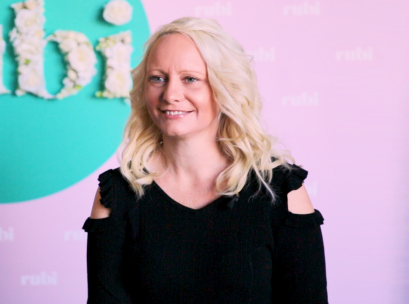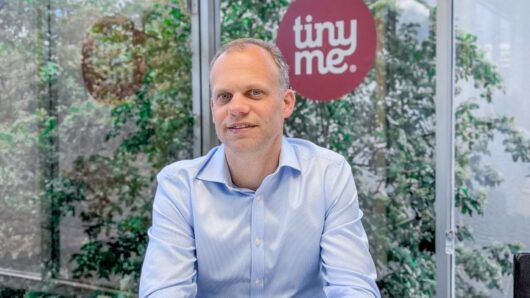 Lisa Rogers fell in love with retail instantly.
Lisa Rogers fell in love with retail instantly.
“I love to stay busy and on the move; I love to have the challenge of thinking about customers and what their needs are,” she tells IRW.
Starting her retail career at Just Group in Queensland when she was just 17 years old, Rogers worked her way up from the shop floor to store manager, and stayed at the company for 10 years, before moving to Cotton On Group in 2003.
As she closes in on 15 years at Cotton On, Rogers notes that she has “certainly been loyal to brands” over the course of her career and still benefits from the lessons she learned working at the coal face.
Inside Retail Weekly: Like many people, you started your retail career on the shop floor. What are some of the key things you learned then that you still utilise today?
Lisa Rogers: I draw from experience on a day-to-day basis, whether that’s giving advice to someone – I can role-play out what they do and it comes from those real-life experiences – or talking about work-life balance. Retailers are crazy people, and one of the things
I like to teach my team is how to get that really healthy balance and how to switch off and why.
IRW: Has there ever been an initiative that someone in the head office was proposing, but you realised wouldn’t work as planned, because of your shop floor experience?
LR: I think everybody comes to work to do the right thing, and there are many initiatives we want our team members to continue to strive to do, but you have to ask the people that are running the shop floor day to day. When we started our click-and-collect initiative, we had to think about how it worked for the team on the shop floor. How many bags are they preparing on a daily basis? I think we can all remember how the layby cupboards used to look. We need to think about the best way to do click-and-collect for the retail team.
In our Chadstone store, we’ve been really obvious with how we do click-and-collect. We built a see-through [cupboard] for click-and-collect orders, so our team doesn’t have to leave the shop floor; it’s right near the counter, so they don’t have to go to a back room.
That’s what’s right for the customer and that’s what’s right for the team.
IRW: You mention that work-life balance is important to you. Is it hard to avoid burnout, or do you find the pace of retail energy-giving?
LR: I find it energy-giving. We avoid things that take our energy away because it is fast-paced. Every Monday morning we’re in there talking about what our customer is telling us and coming up with strategies to better service them the way they want to be serviced, and I think we do a really good job. But it’s important for all of us to make sure we’re having regular breaks, regular check-ins. That’s really genuine; we genuinely take care of one another.
IRW: A lot of retailers talk about listening to the customer. Is it different from a head office versus an in-store perspective?
LR: It’s really easy to say that you need to listen to the customer’s needs… We really listen to what the customer is telling us they want, and our action is very quick around that. We’re not slow about it. We’re making decisions on a Monday and coming up with a plan on a Tuesday. The customer is demanding speed, and so they should.
IRW: How do stores and digital each factor into Cotton On’s growth strategy? And how do they work together?
LR: We have click-and-collect in quite a few stores, and we want to take that to more stores, so the customer can shop how they want. We have store-to-door, so if the customer can’t find a product, we’ll send it to their door. We understand that online and in-store channels go hand in hand.
As online comes through, we need to keep our stores feeling fresh, and new product coming through every single week. It’s one of the most important things for our customer, and she tells us that every single time. I think we’ve begun to experience in Australia in the last five years what’s been happening in the US for a long time.
IRW: How do online and in-store work together from an organisational perspective? Are you overseeing the e-commerce business?
LR: Brendan [Sweeney] heads up our e-commerce, but we all work together as a team, so it’s really important that our plan aligns in
bricks-and-mortar as well as online. We certainly get together and attend Monday [meetings] together, so we can come up with
those plans.
IRW: Cotton On has been busy in the Australian market recently, with its launch on The Iconic and move to a new
distribution centre [DC]. Is the focus more on online or store growth right now?
LR: I think the focus is on omnichannel right now. We’re seeing great success with our megastores, because it’s seamless for customers. They can come in and shop all our brands just like they can online, and we’re having amazing success
through that. But equally, if a standalone store is right for a certain demographic, we’ll do that as well. I feel like people want the inclusiveness of omnichannel.
They want to feel a part of it; they don’t want to be talked at, they want to be talked with. As we get better and better with online, the
more customers are responding.
IRW: Are you planning to open more megastores?
LR: I think there’s definitely a focus on megastores because we can keep customers. If there’s a mum, and she wants to shop
[Cotton on] Kids, we’re able to give her that seamless experience in a one-stop shop, but if it makes
sense for a community to have a standalone store, we’ll absolutely do that too.
IRW: What new trends are you seeing in bricks-and-mortar stores lately?
LR: If you’re talking about trends that are here today, there are definitely linen trends, platform trends in footwear, which is really
exciting – and they’re very different. So it’s giving our ladies a reason to come back and buy. As I was saying earlier, it’s that freshness aspect, so every day we’re dropping newness in our stores, and customers are really responding. If you fail to evolve, you can get left behind.
As we spoke about before with the new DC, I feel like I’ve got the ability to get something [in-store] tomorrow, so again, it’s the pace of
responding to what the customer wants and is telling us.
IRW: With all the focus on having new stock in-store, do you feel like it contributes to the discount cycle?
LR: I know many retailers will wait for sale periods and have a lot of dilution all at once, whereas we just respond to what
the customer is telling us. None of us are emotional about it if the customer has told us that the product isn’t right. All we need is one
weekend, and we go, ‘Right, we hear you. You don’t like this; we’re going to mark it down.’
That forms a massive part of our Monday meetings, so it’s smart to do it frequently and it makes space for new items.
IRW: But do you think you’re acclimatising customers to wait for things to go on sale before buying?
LR: No, I don’t feel like that’s a problem for
us whatsoever. If anything, our longstanding
customers know that we’re refreshing our sale
racks every day, and we don’t have a massive
representation in all stores, but we do have
a small amount of sales in any given week.
There’s stuff that they’re not willing to pay full
price for, but happy to get for a bargain, but there’s stuff that doesn’t
end up on the sale rack because it sells out.
IRW: Any trends you’re seeing in store design?
LR: I think it’s interactive. It’s less about hanging a poster and
doing a massive campaign around a particular thing, and more
about influencers and bloggers. For us, there’s less density on
our shop floor, so it’s really important to understand the navigation
of the customer, so they can see clearly what our outfits are, what
we’re talking to, our destination.
IRW: And what about digital initiatives in stores?
LR: It’s about being seamless with how the customer shops. We
know that 55 per cent of customers engage with us online, whether
that’s an EDM, our website, or loyalty program. More than 4.1 million
customers have signed up to our Perks rewards program, where you
can shop across brands both online and in-store. More than two
million are Australian customers, and they’re now accounting for 42
per cent of our sales, which
is fantastic.
The customer’s lifestyle is increasingly digital; they have access
to a great volume of innovation and they’re exposed to more
experiences than ever before around the world. We have to be redhot
and deliver what they want, when they want, how they want.
IRW: Some people prefer to wait for the early adopters to try
out new technology and work out the kinks, and then they can
implement it after it’s been proven. Do you think it’s better to be
an early adopter, or wait?
LR: Do you want to play offensive or defensive? I’d play offensive
any day. We’re not doing it for any other reason than our customer
wants it. And you know what, we do make mistakes, we make a lot
of them, but we’re the first to give ourselves the autopsy, then we go
again. The difference is when we fail, we fail fast and we get back on
the horse and we go again. It can be a strategy to sit back and wait,
but we don’t want to wait for our customer, we want to go to them.
IRW: Retailers are facing a lot of difficulties. What are the main
challenges you’re seeing in the marketplace today?
LR: I don’t find it difficult. I find it challenging in the most amazing
way, and when we recruit to Cotton On, I have a saying now that
we recruit ‘lifers’ because we want them to enjoy it, we want
them to develop their career and we want them to understand our
culture and how we do things. It’s not difficult; it’s awesome. That’s
genuinely how I feel about it. If it sounds difficult, you shouldn’t do it.
IRW: Perhaps conversely, what are the opportunities you’re
seeing right now?
LR: I’ve seen the amazing technologies that all of the giants are
using, like being able to walk in-store and use your phone to make
purchases, or to pay as you walk out. Speaking from an Australian
landscape, the one thing I feel won’t ever go away is the personal
touch, the conversation. The ‘G’day, mate’ is there for a reason
because we like to talk, we like to connect. I think shopping centres
have done a fantastic job of creating hubs with amazing food, cafes,
bar areas. Not only do people come just to shop at bricks-andmortar
stores, they come for the lifestyle and to meet family
and friends.
As much as I like the idea of the sensational things, I believe that
people need people and will always want that personal touch. I
remember when Coles first said it was going to do online shopping;
everyone was thinking that shopping centres would be dead in five
years’ time [because no one would have a reason to go]. And here
we are, and some people just like to shop in person.
IRW: Do you enjoy helping young people who think they might
want to make a career in retail?
LR: It’s pretty much why I do what I do, to be honest. We have
Cotton On University, which is a portal within the business that every
one of our team members can jump on and study and learn any
number of things related to retail, whether that’s buying, planning,
e-commerce…We encourage all of our team members to use it.
There are over 1000 pieces of educational content, and again, it’s
information they can consume when they want to do it, which
is awesome.
We definitely hire for life. I want to help employees figure out
where they want to go and help them get there. We talk about it in
two ways. Sometimes people want to go into a slipstream that’s
more generalist and bounce around to different areas, and some
people just like to home in on what they’re passionate about.
IRW: Has that reduced Cotton On’s churn rate?
LR: People don’t leave a business; they leave their manager, so I
think we definitely pride ourselves on how we lead our teams. It’s the
training, but it’s also the life skills we give our team to have a team
that wants to follow and learn.
IRW: While women in Australia predominantly hold retail jobs,
men still outnumber women when it comes to management
and executive roles. What has your experience been in terms of
finding opportunities for growth and promotion?
LR: It’s not been hard at all. At the start of my career, I had lots of
male leaders and mentors that probably saw talent not gender, and
I’ve been lucky enough to be able to give back what they’ve given
me. From our perspective at Cotton On, 58 per cent of our positions
across the group are filled with females, but we maintain a 50-50
ratio in all leadership positions across the business, in the executive
level and the two levels under that.
Culturally we’re a real business, with real people and real
values. Real talent is appreciated no matter what gender
we’re talking about.





